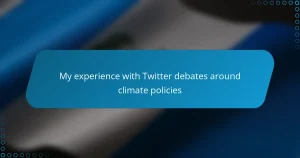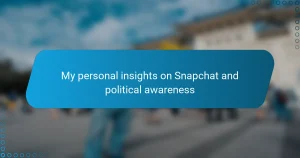Key takeaways
- Political commentary blends facts with opinions, requiring critical reflection to distinguish between analysis and agenda.
- Fox News narratives often emphasize themes of patriotism and create an “us versus them” mentality, which can narrow understanding and reinforce existing beliefs.
- Emotional framing and repetition of key ideas are techniques used by Fox News to evoke strong reactions and shape viewer opinions subconsciously.
- Recognizing media influence is essential; questioning emotional responses can lead to more nuanced perspectives and a better understanding of political narratives.
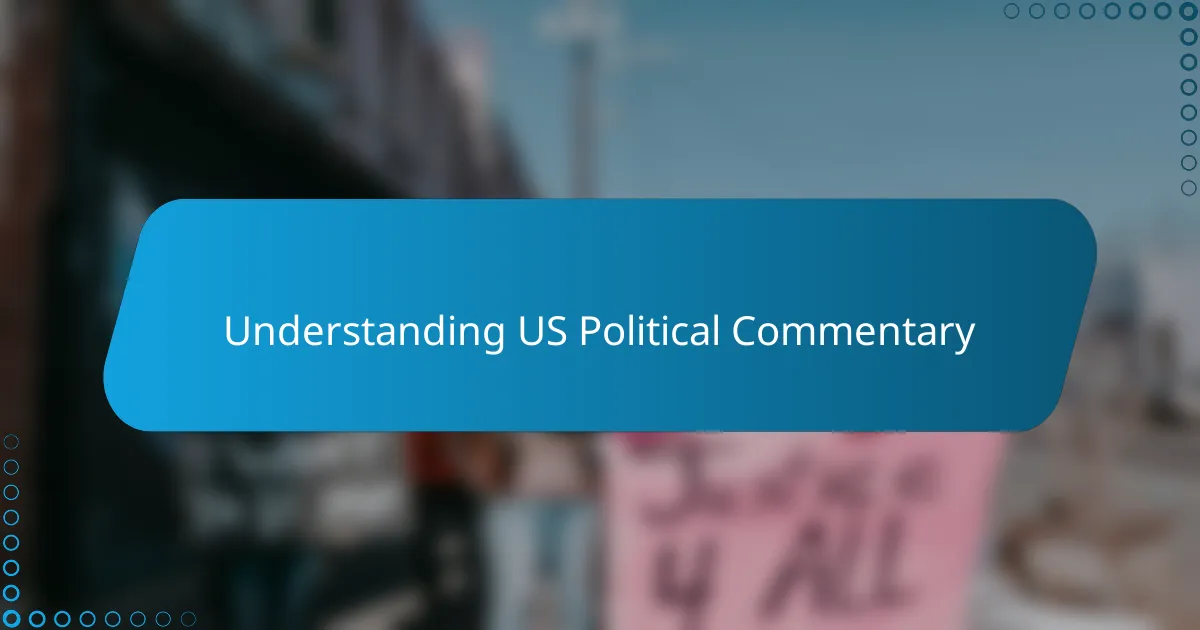
Understanding US political commentary
Understanding US political commentary demands more than just following the headlines; it requires digging into the layers beneath. When I first tuned into various political discussions, I realized how much emotion and identity shape the narratives we encounter. Have you ever noticed how a single story can be told in many ways, depending on the commentator’s perspective?
Political commentary often blends facts with opinions, making it tricky to separate analysis from agenda. From my experience, this mix can sometimes feel overwhelming, almost like navigating a maze with shifting walls. How do we, as engaged citizens, ensure we’re not just absorbing narratives but critically reflecting on them?
What struck me most is how political commentary serves as a lens through which people interpret current events, often reinforcing existing beliefs. I’ve found that recognizing this tendency invites a healthier skepticism and a deeper understanding of the forces shaping public opinion. Isn’t it fascinating how commentary can both inform and influence, sometimes simultaneously?
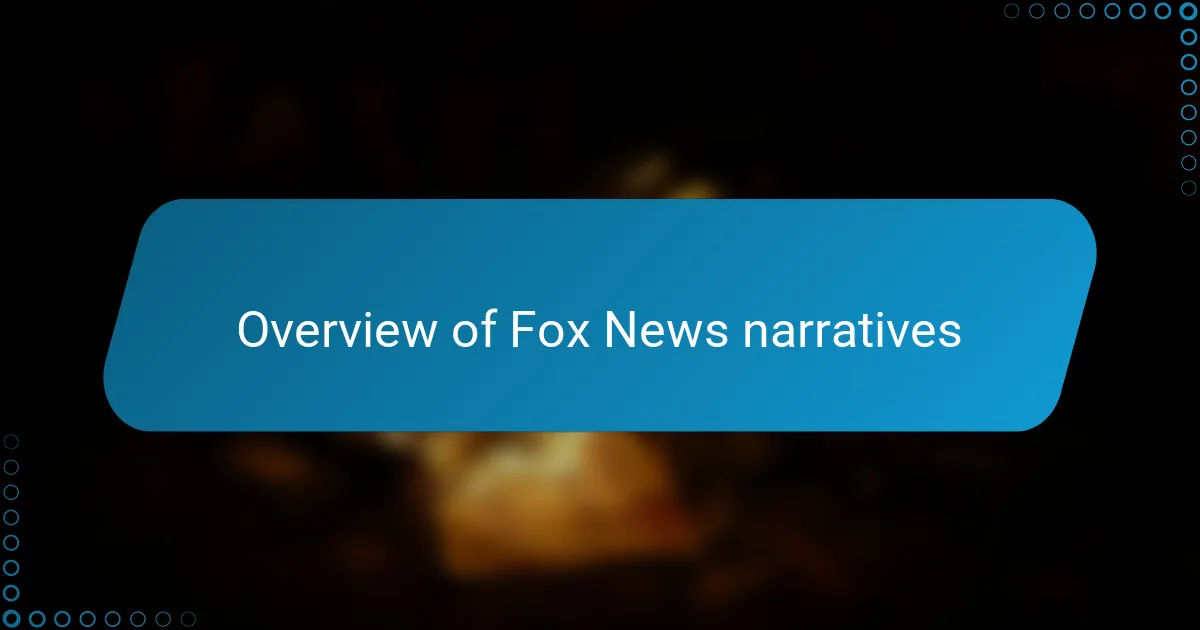
Overview of Fox News narratives
Fox News narratives often present a distinctive lens on political events, framing stories in ways that resonate strongly with a particular audience. When I first paid close attention to their coverage, I noticed how their storytelling emphasized certain themes like patriotism, government skepticism, and traditional values. It made me wonder: how much of what we believe is shaped by the angle these narratives take?
What really caught my attention was the repetition of specific messages — issues were often framed as battles between “us” versus “them.” From my perspective, this creates a sense of urgency and loyalty among viewers, but it can also narrow the scope of understanding. Have you ever caught yourself reacting instinctively to a story, only to later question where that reaction really came from?
I also observed that Fox News tends to highlight stories that align with conservative viewpoints while downplaying or dismissing opposing perspectives. This selective focus can subtly steer opinions over time, shaping not just what people think but how strongly they believe it. In my experience, realizing this pattern helped me become more cautious about accepting narratives at face value.
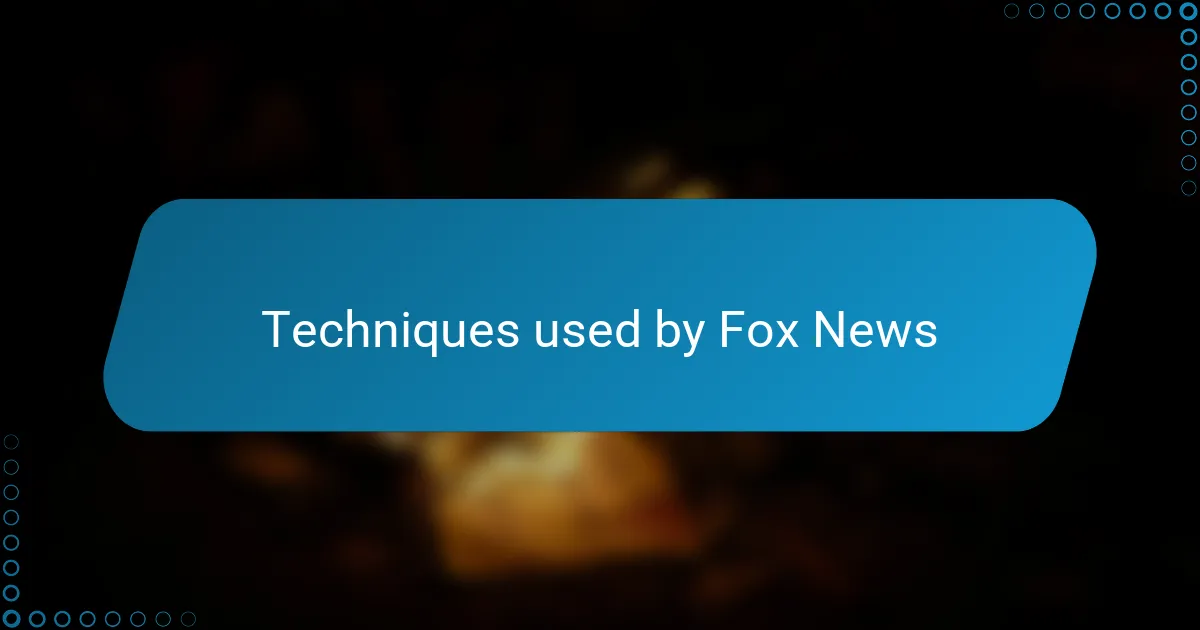
Techniques used by Fox News
One technique Fox News frequently uses is emotional framing, where stories are crafted to evoke strong feelings like fear or pride. When I noticed this, it felt as though the coverage was designed not just to inform but to move viewers emotionally, which naturally makes the message stick more deeply. Have you ever found yourself feeling fired up or defensive after watching a segment, only to wonder later why it had such an impact?
Another method I saw in their storytelling is the repetition of key phrases and ideas. This kind of messaging creates a rhythm that makes certain viewpoints feel familiar and, by extension, more credible. From my perspective, this approach works like a mental imprint, subtly shaping opinions over time without people always realizing it.
I also observed how Fox News often uses selective sourcing, choosing commentators and experts who affirm their narrative. This tactic reinforces a particular worldview and leaves little room for alternative interpretations. In my experience, recognizing this selective lens helped me question the completeness of the information being presented and encouraged me to seek out additional voices.
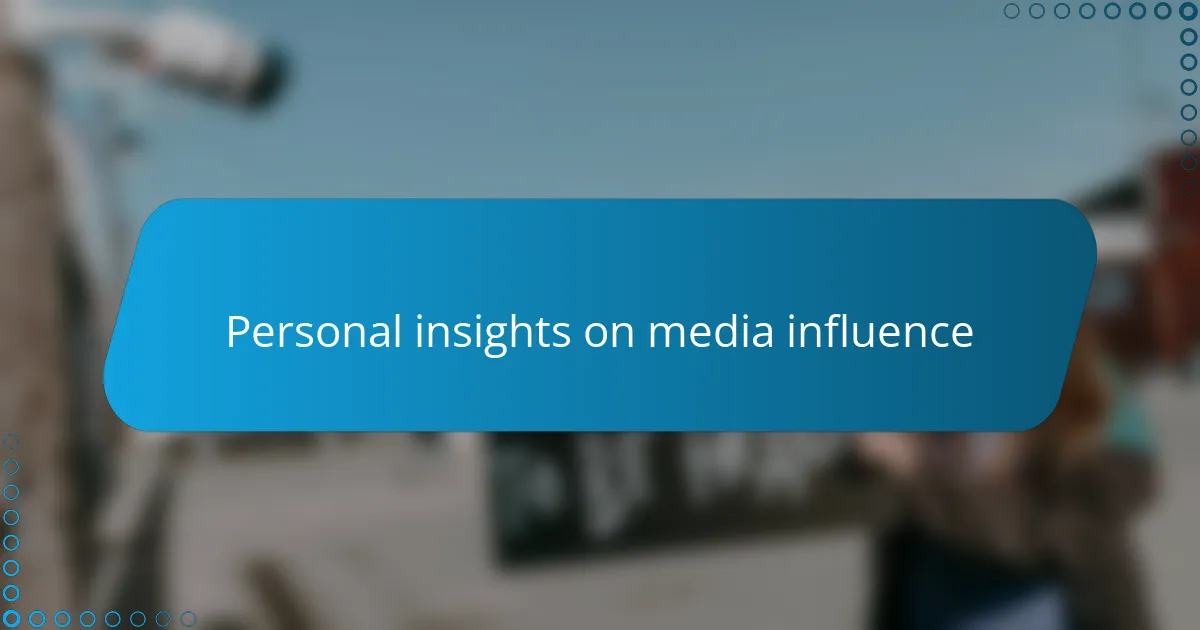
Personal insights on media influence
I’ve noticed that media influence, especially from outlets like Fox News, often seeps into our thinking before we even realize it. There were times when I caught myself echoing phrases and sentiments without having fully examined their origin. It made me wonder—how much of my opinion was truly mine, and how much was shaped by the stories I was repeatedly exposed to?
What’s striking is how emotional undercurrents play a powerful role in this influence. I remember feeling an unexpected surge of anger or pride after certain broadcasts, emotions that stayed with me longer than the facts themselves. Have you ever felt that way too—like your feelings were guiding your thoughts more than logical reasoning?
From my experience, the key to navigating this influence lies in pausing and questioning—not just what we hear, but how it makes us feel. When I started doing this, I found that my perspectives became more nuanced, and I was less likely to accept narratives at face value. It’s a small but crucial step toward understanding the wider landscape of political commentary.
